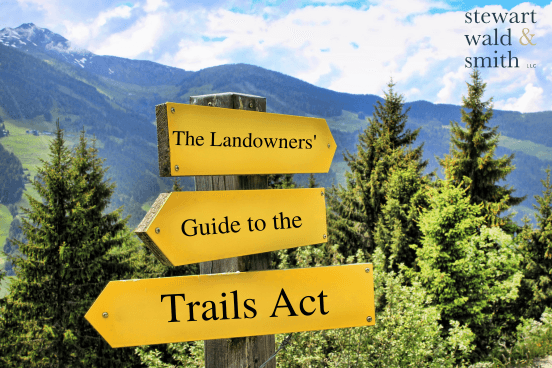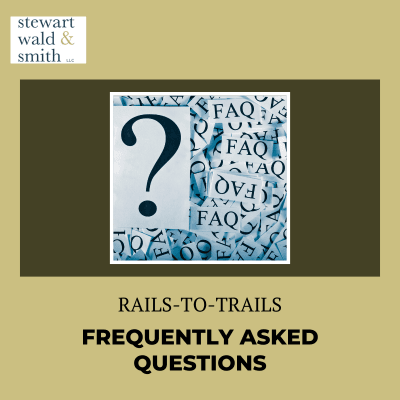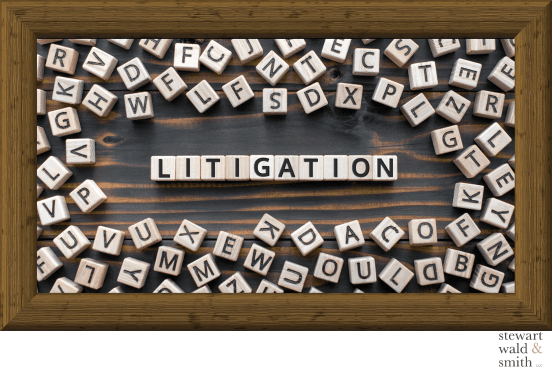Colorado Pacific Rio Grande Railroad - Case Details
Colorado Pacific Rio Grande Railroad
Colorado Pacific Rio Grande Railroad is planning to seek authorization from the U.S. Surface Transportation Board to abandon a 26.55-mile stretch of rail tracks between Monte Vista and South Fork, specifically between mileposts 299.2 through 272.75. Colorado Pacific Rio Grande Railroad also stated that a significant portion of that stretch is set for conversion into a hiking and biking recreational trail. If you own land adjacent to the former Colorado Pacific Rio Grande Railroad right-of-way targeted for trail conversion, that ownership may entitle you to just compensation from the United States government.
The railroad will initiate conversion of the line through the federal “Rails-to-Trails” program, a process created by the Trails Act that permits conversion of railroad lines into public trails for pedestrian and bicycle use. Through this process, the holder of the rail rights (in this case, Colorado Pacific Rio Grande Railroad) files for abandonment with the STB, “railbanks” its line, and receives authorization to convert the line to a trail through transfer of operation and maintenance to a trail user. The authorization formally comes with issuance of a Notice of Interim Trail Use (“NITU”), and it is the NITU that triggers the taking of land.
The taken land at issue is the land underlying the railroad right-of-way. To briefly explain, if the railroad originally acquired only an easement (the right to use the land for railroad purposes, but not the land itself), then you may, as the adjacent landowner, own fee simple title (ownership of the land itself), as Colorado law provides the owner of land next to a railroad easement is presumed to own to the centerline of that easement. Normally, when a railroad abandons its line, this causes the land in the corridor to revert to the adjacent landowners. However, because the federal government prevents this state law process from occurring through imposition of trail use through the Trails Act, it causes a taking of your reversionary rights to the land. Takings like this require the United States to pay just compensation under the Fifth Amendment of the Constitution, giving rise to a claim. Of special note, your claim would only be against the federal government and is not adverse to the trail or any entity sponsoring the trail, nor the former railroad, the Colorado Pacific Rio Grande.
Although we do not know when the STB may issue a NITU, we expect it to happen shortly after the railroad files for abandonment. Our firm currently manages about 50 pending Rails-to-Trails cases across the country (out of about 70 total), and we are by far the leading law firm in securing money damages for landowners in these types of cases. The cases are filed in the United States Court of Federal Claims in Washington, D.C., and we will file a case for landowners along the former rail line as soon as a NITU issues.
WHAT IS THE UNITED STATES TRAILS ACT?
The Trails Act is a federal program that permits the conversion of railroad lines into nature and hiking trails. In this instance, the trail would comprise the current Saluda Grade rail corridor.
If the STB permits a trail conversion, which we expect to occur in the near term, then this would potentially result in the triggering of a claim for money damages in your favor against the United States government. The claim results from the blocking of reversionary property rights in the railroad corridor. This taking would require the United States to pay you just compensation under the Constitution. It is important to note that your claim would only be against the federal government and is NOT adverse to the Saluda Grade Trail or an local entity sponsoring the trail.
The claim would be based on North Carolina and South Carolina property law. An owner of land that abuts a public right of way (in this case a former railroad corridor) is presumed to own a portion of the land within the right of way, such that when the railroad was ever abandoned the land would revert to their ownership. This is what should occur with respect to the land that is slated to become the future rail trail. However, as a result of the Trails Act, the federal government can authorize the inactive railroad to be converted to a recreational trail, thereby blocking a landowners right to regain the property within the railroad corridor, which would result in a taking of land.
Rails to Trails Resources Presented to you by Stewart, Wald & Smith
Click on the image below to download the resource.

Did you receive our mailer, or have any questions for us? We’re here to help you take the next step for just compensation.
Notable Success Examples
-
In Haggart v. United States, our attorneys recovered $177,400,000 on behalf of 254 landowners in King County, Washington, along a 25.45-mile trail.
-
In Raulerson v. United States, our attorneys recovered $33,300,000 on behalf of 264 landowners in Beaufort County, South Carolina, along a 25.05-mile trail.
-
In Smith v. United States, our attorneys recovered $26,477,000 on behalf of 29 landowners in King County, Washington, along a 25.45-mile trail.
-
In Ansley Walk v. United States, our attorneys recovered $18,416,000 on behalf of 5 landowners in Fulton County, Georgia, along a 1-mile trail.
-
In Furlong v. United States, our attorneys recovered $14,200,000 on behalf of 272 landowners in Albany, New York, along a 10.94-mile trail.




